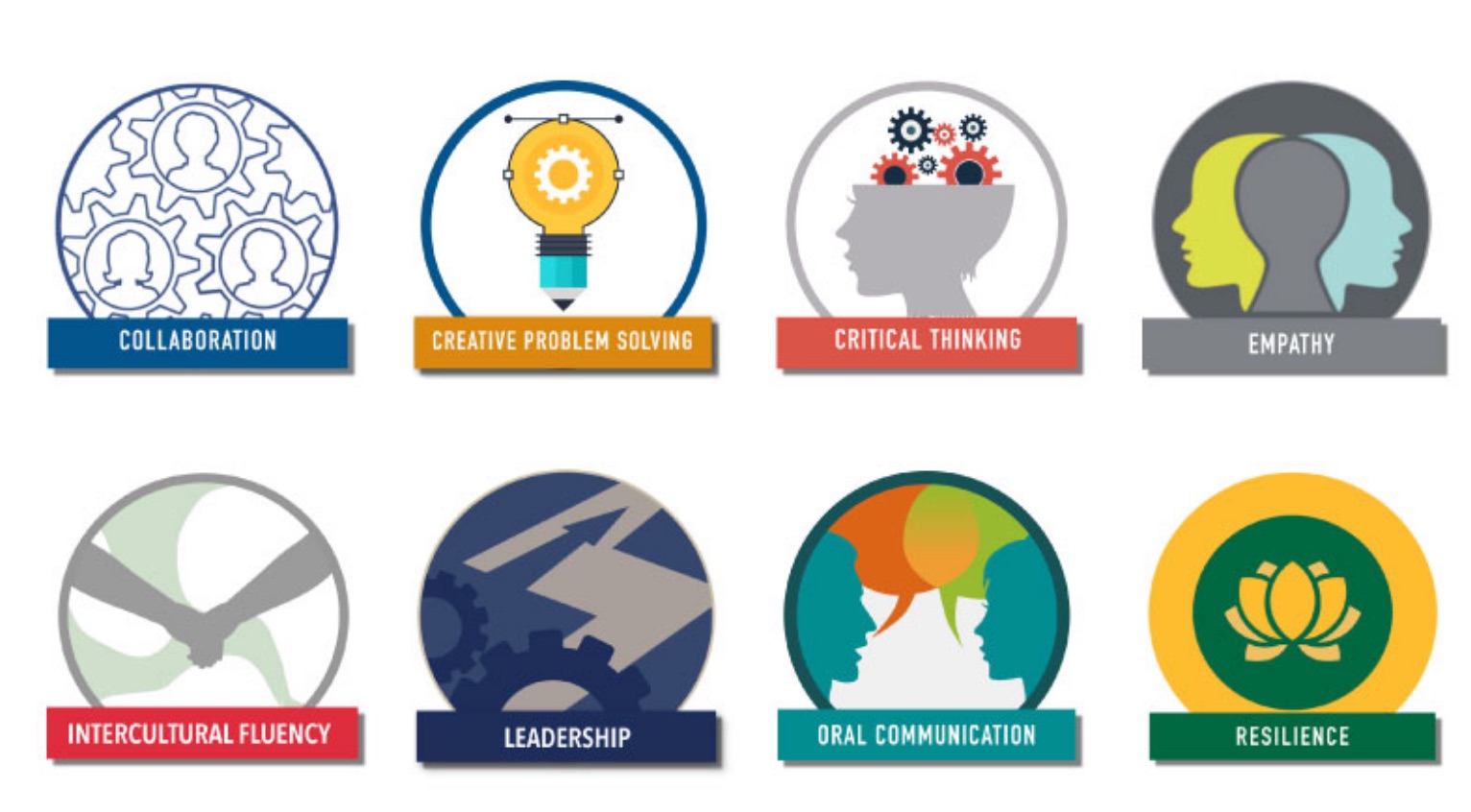This entry was originally posted on the State of the Nation: K-12 e-Learning in Canada website.
Last last month we posted a notification about an item that we noticed in a Contact North newsletter (see Online Learning News: Double-Digit Growth In Online Learning In Canadian Colleges And Universities). Last week we noticed that the full study was finally released. Note that this is the post-secondary version of the State of the Nation: K-12 e-Learning in Canada study.
Results for 2019 survey of online learning in Canadian post-secondary institutions now available

Canadian Digital Learning Research Association (2019) National Survey of Online and Digital Learning 2019 National Report Halifax NS: Canadian Digital Learning Research Association
CDLRA has just released the national report on its third annual survey of online and distance education in Canadian public post-secondary institutions (click on the title above to download a free copy). The francophone version is also available at https://formationenlignecanada.ca/
About this year’s survey
This year I was not so closely involved, as the CDLRA now has an excellent research director, Nicole Johnson, who together with Jeff Seaman of the Babson Survey Research Group, is largely responsible for writing this year’s report.
Once again though the survey depended on the leadership of Tricia Donovan, Principal of eCampus, Nova Scotia Community College, and the executive consultants, Ross Paul, Denis Mayer, Brian Desbiens, Eric Martel, Vivian Forssman and Russ Poulin.
The response rate was slightly lower this year, 70% of all 234 institutions (universities and colleges/CEGEPs), covering 90% of all Canadian post-secondary students, and 95% of all online enrolments. Thus despite a slightly lower response rate than last year, the results are likely to be highly reliable.
Regional reports will follow shortly.
Main results
I recommend that you read the 55 page national report in full, but here are the main points I take away from the 2019 report that are new or different from earlier survey results:
- just over three-quarters of all 234 Canadian post-secondary institutions offer online courses for credit. (This includes non-responding institutions). The smaller the institution, the less likely it is to offer online courses, but still more than half the institutions with less than 2,000 students offer online courses. A lower proportion of Cégeps and private but government subsidised colleges in Québec have online courses, but this is changing, particularly for the Cégeps, where online course enrolments almost doubled between 2017 and 2018. In some jurisdictions, such as Ontario, every post-secondary institution now offers online courses for credit;
- online course enrolments grew by about 10% nationally from 2017 to 2018, while overall enrolments grew by 2%. Growth of online learning in Ontario was particularly strong, at 14%, probably reflecting earlier investment in online learning through eCampus Ontario. Atlantic Canada was the region with the slowest growth, at 4%; 71% of institutions expected their online enrolments to grow again from 2018 to 2019, more than their expectations for growth in enrolments overall;
- for the first time, the survey asked institutions to report on the location of their online students. About a third of institutions do not track this data. For those that do, the majority of online students are from the same province in which the institution is located. Nevertheless, 21 institutions reported that more than 20% of their online students were out of province. However, more than half the institutions reported 5% or less online students who were out of province;
- also for the first time, institutions were asked about the level of program in which students were enrolled. The proportion of graduate students enrolled in online courses at 10% is very similar to the total proportion of graduate students enrolled at the institution (11%);
- the majority of institutions offer blended or hybrid courses and three-quarters expect growth in these offerings over the next year; there is a lot of experimentation going on in the design of blended/hybrid learning, which is difficult to track at an institutional level (Contact North does a good job of this through its Pockets of Innovation);
- also new were questions about alternative credentials, defined as offerings beyond traditional degrees, diplomas, and certificates. Nearly half of all responding institutions reported that they were offering alternative credentials, although the definition of what constitutes an alternative credential remains a problem, partly because there is a good deal of experimentation going on;
- many institutions are still struggling to provide reliable or comparable data on online enrolments; however, from the open ended comments it appears that the annual survey has resulted in a number of institutions making efforts to improve data collection in this area;
- the proportion of institutions reporting negative perceptions of online learning decreased on a number of measures between 2017 and 2018, suggesting increasing acceptance of online learning
- 79% of institutions reported inadequate training for faculty as one of the main barriers to online learning, up from earlier years; the issue of faculty support and training for teaching online is significant and needs to be addressed in the development of strategic plans for expanding and improving online offerings;
- also for the first time, institutions were asked about their policy for professional development and training of faculty. The results showed that although just more than half the institutions provide voluntary professional development or orientation for teaching online, faculty are rarely required to take part in training or professional development for teaching online.
There are also sections on the use of learning technologies, the use of open textbooks and other forms of OER, institutional views on the strategic importance of online learning and the status of plans for elearning, and perceptions of and barriers to online learning, but while important, they are similar to results from previous years.
My comments
First, let me say these comments are personal and may not be shared by the rest of the survey team (it is my blog!)
Good news
Online learning continues to be widespread and expanding in Canadian post-secondary. Significantly it is expanding faster than overall enrolments. Despite a progressive immigration policy, Canada, like many economically advanced countries, is facing demographic challenges. The proportion of young people is declining. This is beginning to affect overall enrolments. However, the online market tends to be older, and as lifelong learning becomes increasingly important in a digital age, the online learning market is likely to continue to grow over the next few years. This will be critically important to institutions who might otherwise have to lay off instructors if they were to rely solely on full-time, on-campus students coming straight from high school. Nevertheless this move to more online and blended learning will require some strategic shifts in resources and not all institutions have woken up to this yet, or are moving fast enough to implement the necessary changes.
There is also evidence, particularly from the open-ended comments, that in Canadian universities and colleges, there is a lot of innovation and experimentation taking place in the digital learning area, in terms of new technologies, new blended/hybrid designs and alternative credentials. It is more difficult to measure how widespread this is, and whether it is systemic yet; probably not.
Not so good news
There still seems to be a big gap between the importance many institutions give to online learning for the future of the institution, and their actual policies, plans and strategies. While 71% rate online learning as very or extremely important for the future of their institution, institutions that are implementing a plan remain a minority, while the majority of institutions are developing a plan or recognize a need for one. In other words, most institutions are moving, but not fast enough, in terms of managing the move to digital learning.
One indication of this is the very high number of institutions reporting the need for more faculty development and training for teaching online. If anything, the situation is getting more desperate, since very few institutions appear willing to make training in teaching mandatory. What worries me is that it seems beyond the power of institutions to address properly this issue, given that the survey goes to the Provosts’ Offices, that they seem aware of the problem, but that they also seem powerless to do anything about it. If that is the case there is a need for external regulation, such as government requiring all instructors to eventually get a post-graduate teaching qualification, as a condition of funding or accreditation (see my earlier post on this topic).

Although the market for online learning continues to grow locally, Canadian institutions have not so far pulled in students from outside their province, nor have they made a special effort in online graduate programs. There are lots of good reasons for this, but in short, there is enormous scope for growth in online graduate programs and for online international students, but again this needs a major strategic effort. This is such a big issue that it will be the subject of another post.
Challenges for the survey
First, this being the third annual survey, there are signs of survey fatigue setting in. The response rate, although still high at 70%, was down from 80% in 2018. Some institutions reported that there was little change in data between years. It is likely then that the survey team in future years may use sampling so that institutions report enrolment data only every three years or so. This is likely to be more reliable now we have established a strong overall roster base and overall data for the system.
Second, obtaining consistent and reliable data remains a challenge. There is still too much unexplained variation in data from year to year or within the same year within institutions, probably due to different assumptions and different people responding. For instance how do you count individual students? Full time only? Full-time plus part-time? Full-time equivalents (i.e., adding up fractions of part-time students)? Credit or non-credit? Only those funded by government (domestic) or international? and so on. This is not helped by different reporting standards between provinces, unlike in the USA, where the federal Department of Education has imposed common reporting standards in order for institutions to get financial aid. The survey team will continue to work with institutions on this issue.
Conclusion
Once again, I am struck by the importance and value of this survey.
It shows that Canada is doing really well in online and digital learning, but also faces many challenges. The survey does not itself offer solutions to these challenges but it does give faculty, institutions and governments a good idea of what these issues are, where there are gaps and weaknesses, and where there are valuable lessons to be learned that will improve the system as a whole. Most of all, it provides data and evidence for decision-making. Now that’s a strange idea, isn’t it?
Original article available at https://www.tonybates.ca/2019/11/19/results-for-2019-survey-of-online-learning-in-canadian-post-secondary-institutions-now-available/
